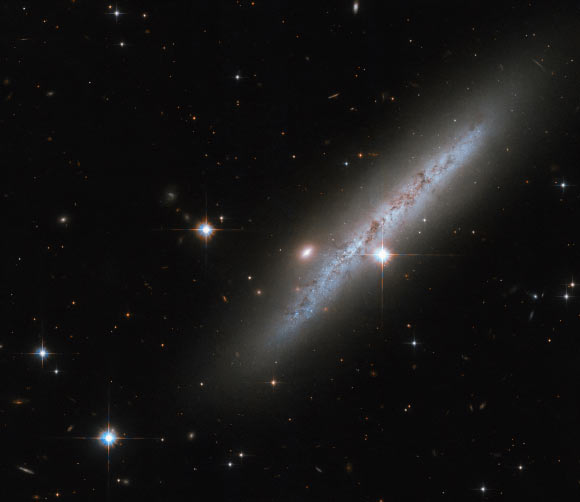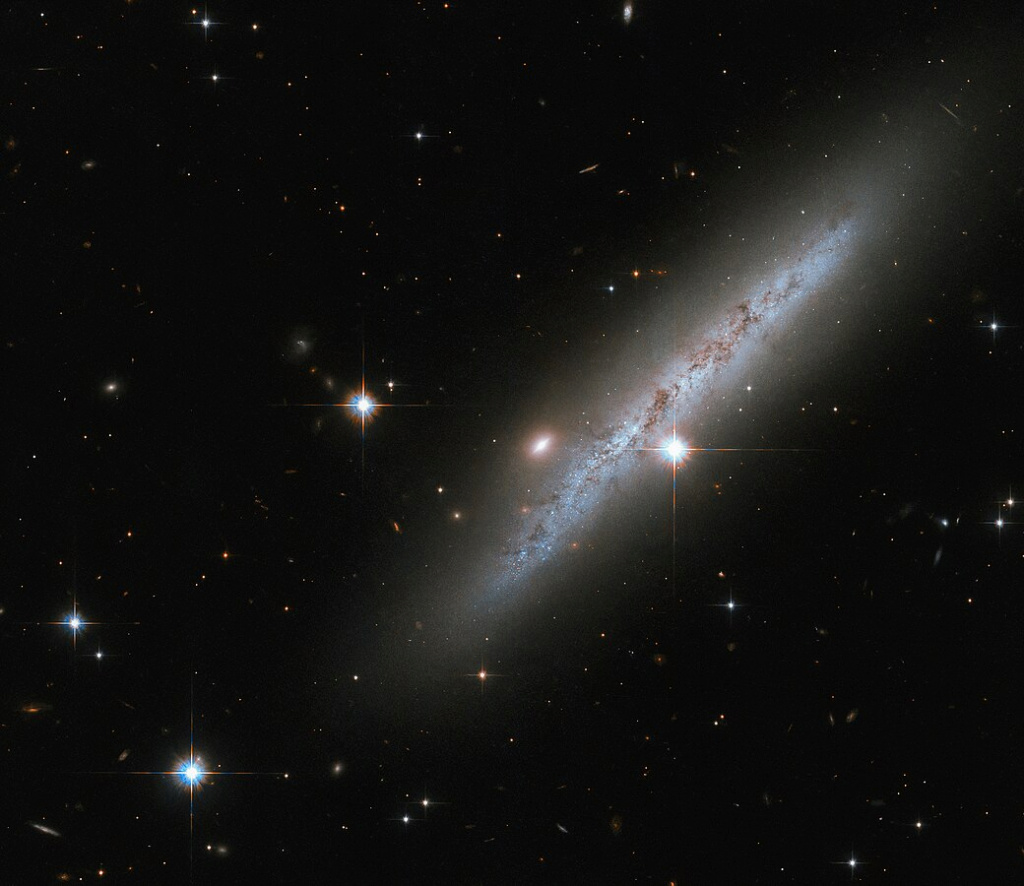Hubble Snaps Breathtaking New Image of UGC 2890

This Hubble image shows UGC 2890, a small spiral galaxy some 30 million light-years away in the constellation of Camelopardalis. Image credit: NASA / ESA / Hubble / C. Kilpatrick.
The NASA/ESA Hubble Space Telescope have produced a beautiful image of the side-on spiral galaxy UGC 2890.
UGC 2890 is located approximately 30 million light-years away in the constellation of Camelopardalis.
Otherwise known as LEDA 14123 or IRAS 03504+7246, this spiral galaxy has a diameter of 45,000 light-years.
In 2009, astronomers spotted a catastrophically powerful Type II supernova explosion in UGC 2890.
While the supernova, labeled SN 2009bw, has long since faded from view, Hubble recently took a break from its regular observing schedule to inspect the aftermath of this explosive event.
“A Type II supernova is a spectacularly energetic explosion that marks the violent death of a massive star,” Hubble astronomers said.
“As it runs out of the elements necessary to fuel nuclear fusion, the core of a massive star flickers out and stops producing energy.”
“With nothing to support the crushing force of gravity, the core of the star shrinks and then suddenly implodes, leaving the star’s outer layers to collapse inwards and rebound out into space as a supernova explosion.”

The color image was made from separate exposures taken in the visible and near-infrared regions of the spectrum with Hubble’s Advanced Camera for Surveys (ACS).
Two filters were used to sample various wavelengths.
The color results from assigning different hues to each monochromatic image associated with an individual filter.
“This observation is one of many Hubble investigations of Type II supernovae,” the astronomers said.
“We turned to Hubble’s ACS instrument to explore the surroundings of Type II supernovae in the hope of discovering the ages and masses of stars in the neighborhood.”
“This will reveal insights into the types of stars that eventually create Type II supernovae, as well as revealing any stellar survivors of colossal supernova explosions.”
Source : websites

